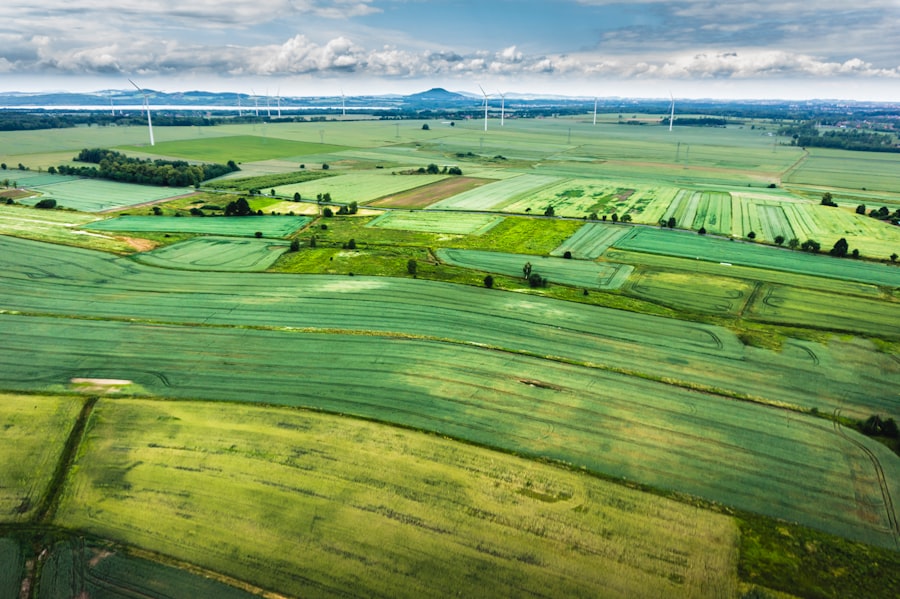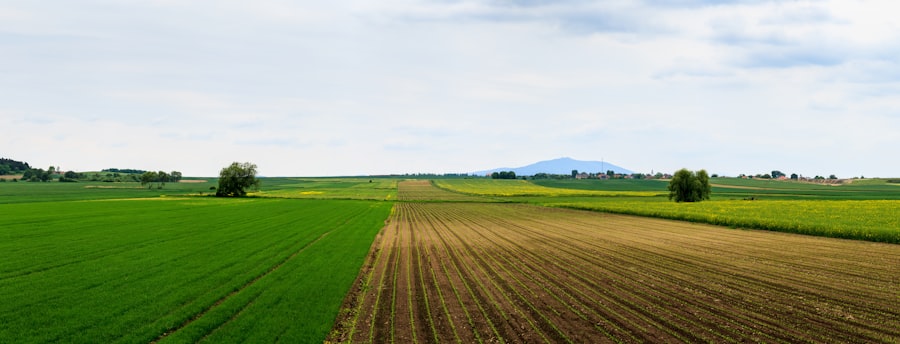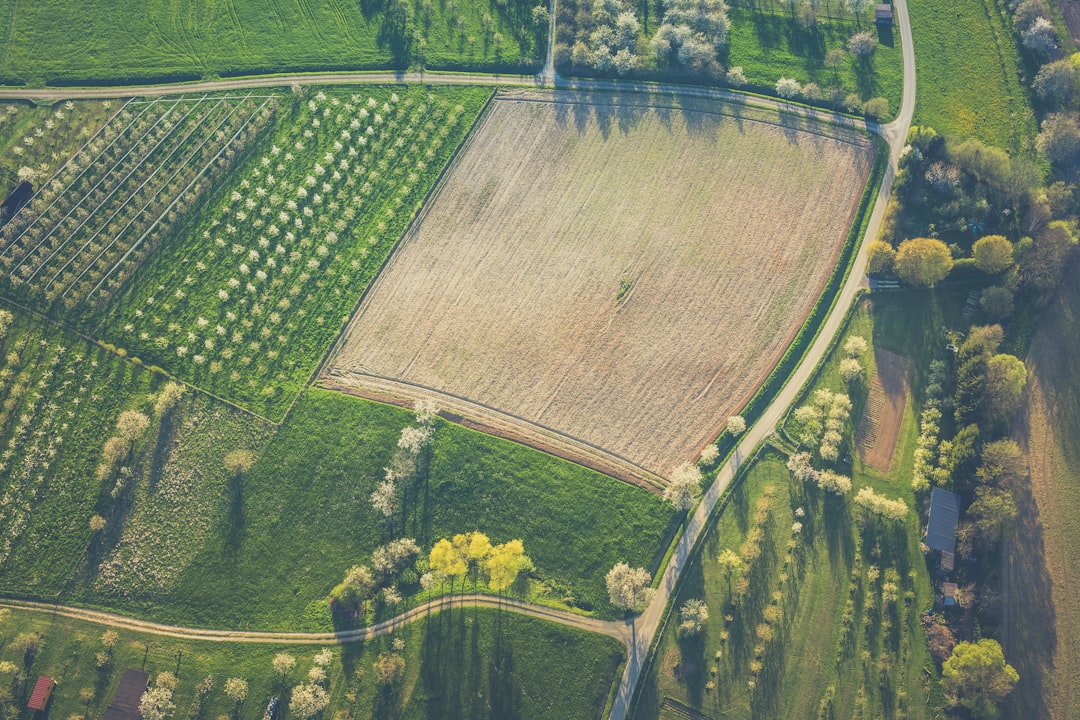As you explore the world of investment opportunities, you may find yourself drawn to the unique asset class of farmland. This sector has gained significant attention in recent years, not only for its potential for financial returns but also for its intrinsic value in supporting global food production. Farmland is more than just a piece of land; it represents a tangible asset that can provide stability and growth in an increasingly volatile market.
With the global population projected to reach nearly 10 billion by 2050, the demand for agricultural products is expected to surge, making farmland an attractive investment option. Investing in farmland offers a distinct advantage over traditional asset classes such as stocks and bonds. Unlike these financial instruments, farmland is a physical asset that can appreciate in value over time while also generating income through agricultural production.
This dual benefit makes farmland a compelling choice for investors seeking to diversify their portfolios and hedge against inflation. As you delve deeper into this asset class, you will discover the myriad of opportunities and challenges that come with investing in farmland.
Key Takeaways
- Farmland is a unique and valuable asset class that offers stability and long-term growth potential.
- Investing in farmland can provide various benefits, including income generation, portfolio diversification, and a hedge against inflation.
- When considering farmland investments, factors such as location, soil quality, water availability, and management practices should be carefully evaluated.
- Different investment strategies, such as direct ownership, farmland funds, and agricultural real estate investment trusts (REITs), offer various opportunities for investors.
- Risks associated with farmland investments include commodity price volatility, environmental factors, and regulatory changes that can impact profitability.
The Benefits of Investing in Farmland
One of the primary benefits of investing in farmland is its historical performance as a stable investment. Over the years, farmland has demonstrated resilience against economic downturns, often maintaining its value when other assets falter. This stability can be particularly appealing to you as an investor looking for a safe haven during turbulent times.
Additionally, farmland tends to appreciate in value over the long term, driven by factors such as population growth, urbanization, and increasing demand for food and biofuels. Another significant advantage is the potential for income generation through leasing or farming operations. If you choose to invest directly in farmland, you can lease the land to farmers or engage in agricultural production yourself.
This can provide a steady stream of rental income or profits from crop sales, creating a reliable cash flow that complements the appreciation of the land itself.
Factors to Consider When Investing in Farmland

When considering an investment in farmland, several critical factors warrant your attention. First and foremost is location. The geographical area where the farmland is situated plays a crucial role in its value and productivity.
Regions with fertile soil, favorable climate conditions, and access to water resources are typically more desirable for agricultural activities. As you evaluate potential investments, take the time to research various regions and their agricultural viability. Another essential factor is the type of crops or livestock that can be produced on the land.
Different regions are suited for different types of agriculture, and understanding these nuances will help you make informed decisions. Additionally, consider the local market conditions and demand for specific agricultural products. By aligning your investment with high-demand crops or livestock, you can maximize your potential returns and minimize risks associated with market fluctuations.
Farmland Investment Strategies
| Strategy | Description | Benefits |
|---|---|---|
| Buy and Hold | Acquiring farmland for long-term ownership | Stable returns, potential for appreciation |
| Leasing | Renting out farmland to tenants | Regular income, lower management responsibilities |
| Development | Converting farmland for residential or commercial use | Potential for higher returns, diversification |
As you embark on your journey into farmland investment, it’s crucial to develop a clear strategy that aligns with your financial goals and risk tolerance. One common approach is direct ownership, where you purchase farmland outright and manage it yourself or lease it to farmers. This strategy allows you to have full control over your investment but also requires a significant commitment of time and resources.
Alternatively, you might consider investing through farmland funds or real estate investment trusts (REITs) that specialize in agricultural properties. These vehicles allow you to gain exposure to farmland without the complexities of direct ownership. By pooling resources with other investors, you can diversify your investment across multiple properties and regions, reducing your overall risk.
Whichever strategy you choose, ensure it aligns with your investment objectives and provides a clear path toward achieving your financial goals.
Risks Associated with Farmland Investments
While investing in farmland presents numerous opportunities, it is essential to recognize the inherent risks involved. One significant risk is market volatility, which can impact crop prices and rental income. Factors such as weather conditions, pest infestations, and changes in consumer preferences can all influence agricultural markets.
As an investor, staying informed about these variables will help you navigate potential challenges. Another risk to consider is the long-term commitment required for farmland investments. Unlike stocks or bonds that can be bought and sold relatively quickly, farmland investments often require a longer time horizon to realize returns.
This illiquidity can be a disadvantage if you need access to cash or if market conditions change unexpectedly. Therefore, it’s crucial to assess your financial situation and ensure that you are prepared for the long-term nature of this investment.
The Role of Farmland in Diversifying a Portfolio

In today’s unpredictable economic landscape, diversification is key to managing risk within your investment portfolio. Farmland serves as an excellent diversification tool due to its low correlation with traditional asset classes like stocks and bonds. By incorporating farmland into your portfolio, you can reduce overall volatility and enhance your risk-adjusted returns.
Moreover, farmland investments can provide a hedge against inflation. As prices rise, so do the costs of agricultural products, which can lead to increased revenues for farmland owners. This characteristic makes farmland an attractive option for investors seeking protection against inflationary pressures while also benefiting from potential capital appreciation over time.
Farmland Investment Opportunities Around the World
As you consider investing in farmland, it’s essential to explore opportunities beyond your local market. Various regions around the globe offer unique advantages for agricultural investments. For instance, countries like Brazil and Argentina are known for their vast expanses of arable land and favorable climates for crop production.
These nations have become hotspots for investors seeking high-yield agricultural opportunities. In contrast, developed countries such as the United States and Canada offer established agricultural markets with advanced infrastructure and technology. Investing in these regions may provide more stability but could also come with higher entry costs.
By researching global farmland investment opportunities, you can identify regions that align with your investment strategy and risk tolerance.
The Impact of Technology on Farmland Investments
The agricultural sector has undergone a technological revolution in recent years, significantly impacting how farmland is managed and valued. Innovations such as precision agriculture, drones, and data analytics have transformed farming practices, leading to increased efficiency and productivity. As an investor, understanding these technological advancements can help you identify high-potential farmland investments.
For instance, precision agriculture allows farmers to optimize their use of resources such as water and fertilizers, resulting in higher crop yields and lower environmental impact. By investing in farmland that utilizes these technologies, you position yourself to benefit from enhanced productivity and profitability. Additionally, staying informed about emerging technologies in agriculture will enable you to make strategic investment decisions that capitalize on industry trends.
Regulatory and Legal Considerations for Farmland Investors
Navigating the regulatory landscape is crucial when investing in farmland. Each country has its own set of laws governing land ownership, agricultural practices, and environmental regulations. As an investor, it’s essential to familiarize yourself with these legal considerations to avoid potential pitfalls.
For example, some countries may impose restrictions on foreign ownership of agricultural land or require specific permits for farming operations. Understanding these regulations will help you assess the feasibility of your investment and ensure compliance with local laws. Consulting with legal experts who specialize in agricultural investments can provide valuable insights and guidance throughout the process.
The Potential for Sustainable and Ethical Farmland Investments
In recent years, there has been a growing emphasis on sustainable and ethical investing practices across various asset classes, including farmland. As an investor, you have the opportunity to align your financial goals with your values by seeking out sustainable farming practices that prioritize environmental stewardship and social responsibility. Investing in organic farming or regenerative agriculture not only supports sustainable practices but can also yield premium prices for crops due to increasing consumer demand for ethically produced food.
By focusing on sustainable farmland investments, you contribute positively to the environment while potentially enhancing your financial returns.
The Future of Farmland as an Asset Class
As you reflect on the potential of farmland as an asset class, it becomes clear that this sector offers unique opportunities for investors seeking stability, income generation, and diversification. With global population growth driving demand for food production and advancements in agricultural technology enhancing productivity, the future of farmland investments appears promising. However, it’s essential to approach this asset class with careful consideration of the associated risks and challenges.
By developing a clear investment strategy, staying informed about market trends, and aligning your investments with sustainable practices, you can position yourself for success in this dynamic sector. As you navigate the world of farmland investments, remember that this tangible asset not only holds financial potential but also plays a vital role in feeding the world’s growing population.
Investing in farmland has gained traction as a viable asset class, offering diversification and potential inflation hedging benefits. An insightful article that delves into the intricacies of farmland investment is available on How Wealth Grows. This piece explores the various factors that make farmland an attractive option for investors, such as its historical performance and the growing demand for agricultural products. For a deeper understanding of the potential benefits and challenges associated with farmland as an asset class, you can read more in the article on howwealthgrows.
com/’>How Wealth Grows.
FAQs
What is farmland as an asset class?
Farmland as an asset class refers to the investment in agricultural land for the purpose of generating returns. It is considered an alternative investment that can provide diversification and potential inflation protection.
What are the benefits of investing in farmland as an asset class?
Investing in farmland as an asset class can provide potential for long-term capital appreciation, stable income from crop yields or rental income, and a hedge against inflation. It also offers diversification from traditional asset classes such as stocks and bonds.
What are the risks associated with investing in farmland as an asset class?
Risks associated with investing in farmland as an asset class include exposure to commodity price fluctuations, weather-related risks, regulatory changes, and potential management challenges if the land is operated by the investor.
How can investors access farmland as an asset class?
Investors can access farmland as an asset class through various means, including direct ownership of agricultural land, investing in farmland-focused real estate investment trusts (REITs), or through farmland investment funds and partnerships.
What factors should investors consider before investing in farmland as an asset class?
Before investing in farmland as an asset class, investors should consider factors such as the location and quality of the land, the potential for crop yields, the management and operational aspects of the investment, and the overall market conditions for agricultural commodities.
